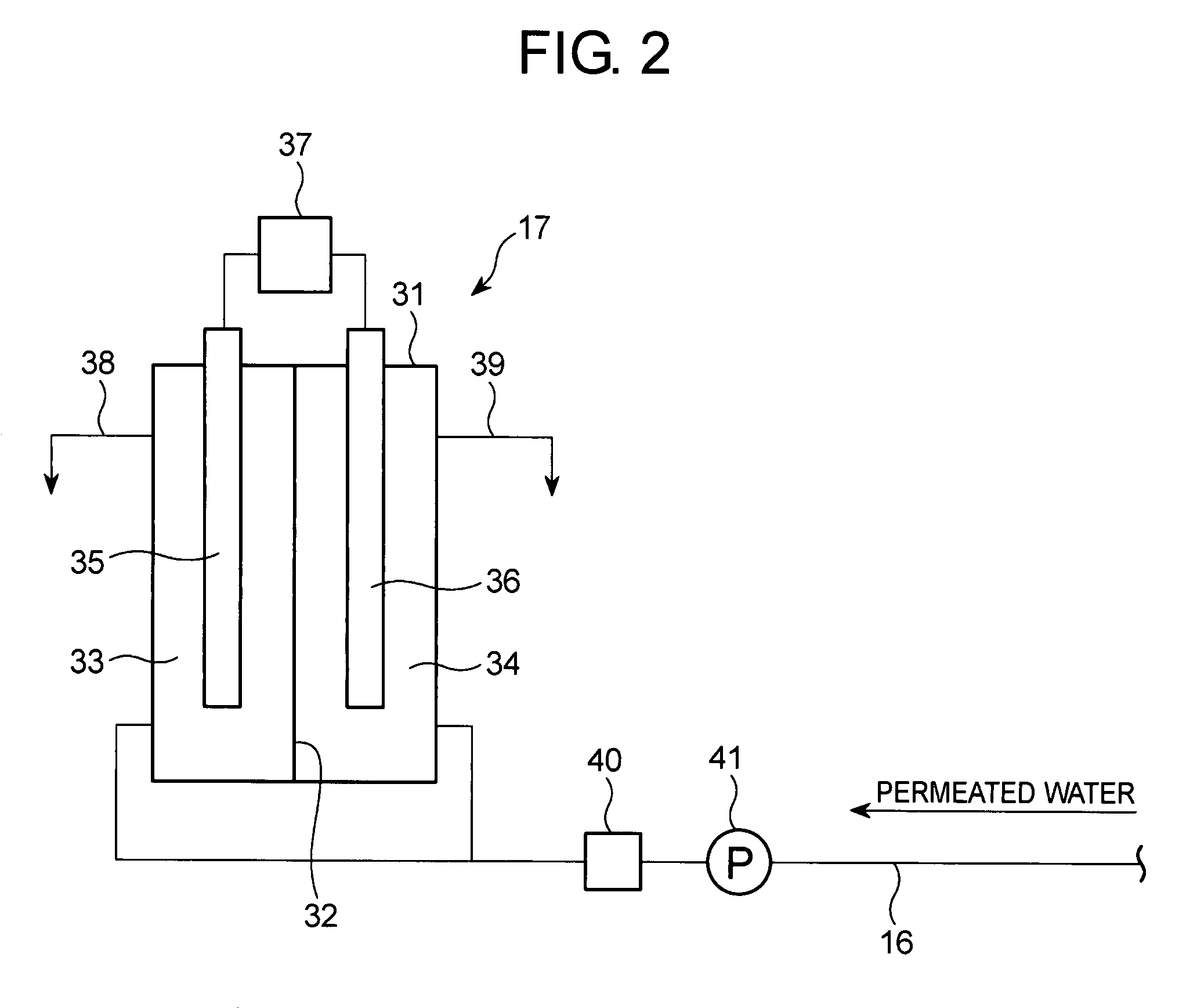Water treatment system
- Summary
- Abstract
- Description
- Claims
- Application Information
AI Technical Summary
Benefits of technology
Problems solved by technology
Method used
Image
Examples
Embodiment Construction
[0021]A preferred embodiment is explained below with reference to the accompanied drawings. The embodiment is, however, an example of the present invention, and the water treatment system of the present invention is not limited to this embodiment.
[0022]As shown in FIG. 1, a water treatment system 1 is provided with a reverse osmosis membrane module 2 as a filter, and a reverse osmosis membrane (not shown) is housed in a container body 2a of the reverse osmosis membrane module 2. The reverse osmosis membrane has a form of a hollow filament and a plurality of the membranes are stacked in a linear form or a U-shape and fixed by connecting with synthetic resin or the like at distal ends thereof. The reverse osmosis membrane used here is made of cellulose triacetate having acid resistance. The container body 2a has a sealed structure with an inlet and outlets (not shown) opened for feeding in raw water and for discharging permeated and concentrated water. To the inlet and outlets, a raw ...
PUM
 Login to View More
Login to View More Abstract
Description
Claims
Application Information
 Login to View More
Login to View More - R&D
- Intellectual Property
- Life Sciences
- Materials
- Tech Scout
- Unparalleled Data Quality
- Higher Quality Content
- 60% Fewer Hallucinations
Browse by: Latest US Patents, China's latest patents, Technical Efficacy Thesaurus, Application Domain, Technology Topic, Popular Technical Reports.
© 2025 PatSnap. All rights reserved.Legal|Privacy policy|Modern Slavery Act Transparency Statement|Sitemap|About US| Contact US: help@patsnap.com



